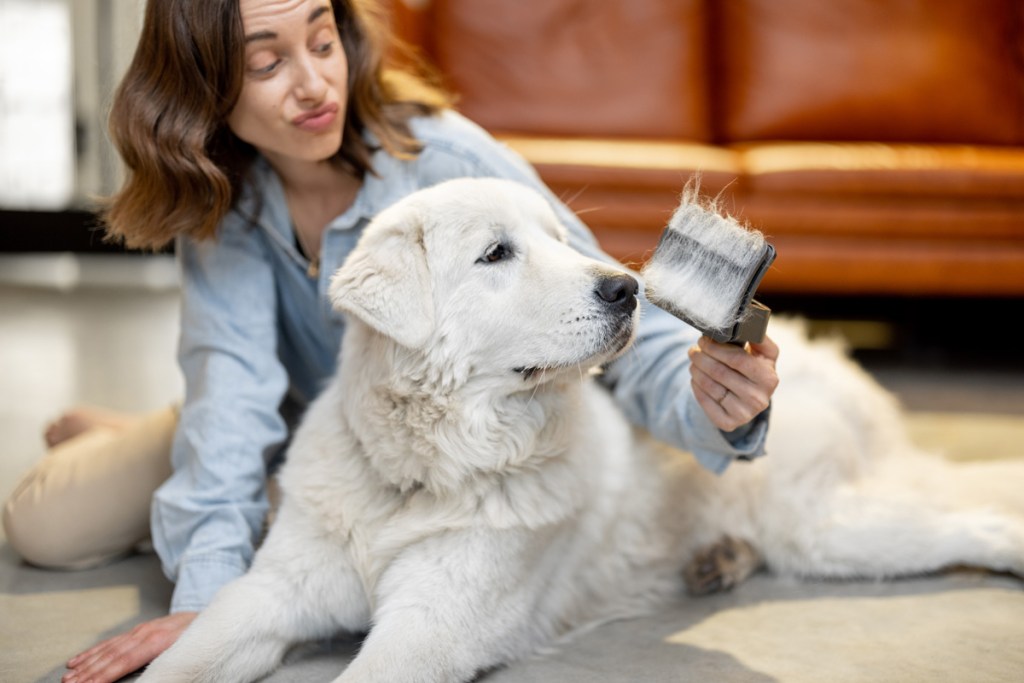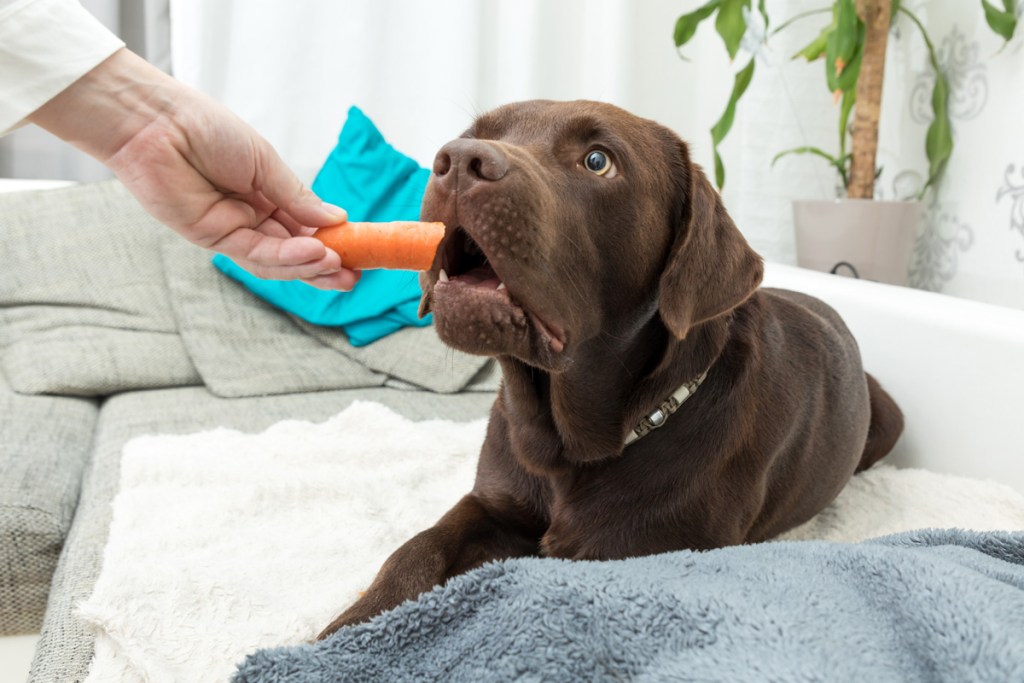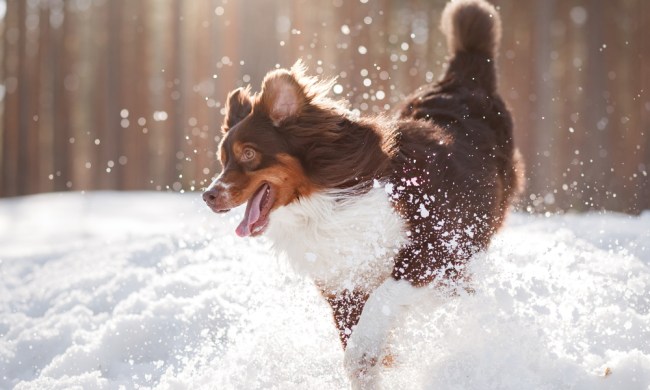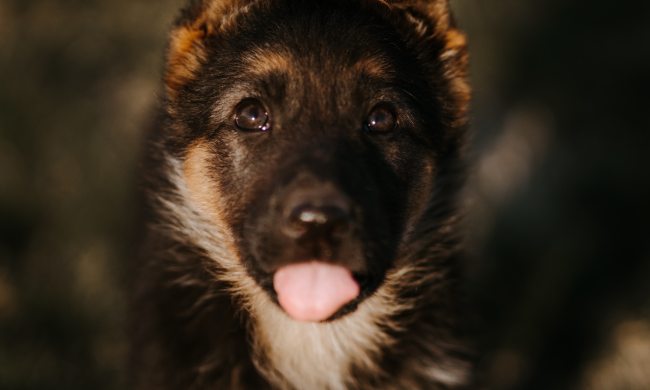We all love our dogs, but it can get overwhelming keeping up with all that hair. It’s no fun vacuuming every day or pulling hair out of your coffee. There’s no getting around it: If you live with a dog, there’s going to be hair. The amount will depend on your dog’s breed. Some dogs shed year-round, while others are seasonal shedders, typically losing hair in the spring and fall. While you can’t stop the shedding, you can take steps to manage the amount of hair in your home.
How to keep shedding under control
Brush your dog every day
Daily brushing will keep your dog’s coat and skin healthy and help cut down on excessive hair loss. The best brush to use depends on your dog’s coat, texture, and strength, according to the American Kennel Club. Pin brushes work well for long-haired dogs, while bristle brushes are best for breeds with short or medium-length coats.

Use a deshedding tool
In addition to brushing, a deshedding tool helps keep loose hair under control. For example, the highly rated Flying Pawfect Pet Slicker is a good option for long-haired or double-coated dogs. The Bodhi Dog Bath Brush is a rubber groomer that’s a popular choice for dogs with sensitive skin. Many pet parents and groomers rave about Furminator deshedding tools. You can find the best Furminator tool for your dog by choosing your breed type on the company’s website.
Give regular baths
In an article published on VetStreet, veterinarian Marty Becker recommends regular bathing to control shedding. Bathing with a deshedding shampoo helps loosen and remove fur that’s ready to shed. In addition, Becker recommends using a bath tool such as the Kong Zoom Groom to help remove hair.
Keep your dog hydrated
Dehydrated skin can increase hair loss. Unless directed by your veterinarian, it’s not necessary to measure how much water your dog is drinking, say experts at PetMD. You just need to make sure that your dog always has access to fresh, clean water every day.
What home remedy can I give my dog for shedding?
Here are just a few home remedies that help keep your dog’s coat and skin healthy and may also cut down on hair loss. Be sure to check with your veterinarian before adding any new supplement to your dog’s diet.
- Fish – Veterinary experts recommend adding omega-3 fatty acids to a dog’s diet to improve the hair and skin. Fish is one of the best sources of omega-3s. You can add small amounts of salmon, sardines, and anchovies to your dog’s food or serve them as tasty treats.
- Flaxseed – According to PetMD, flaxseed offers numerous health benefits to dogs. Flaxseed’s anti-inflammatory properties can help keep your dog’s skin and coat healthy. This nut-flavored seed can be sprinkled over food at mealtimes.
- All-natural blackstrap molasses – This sweet treat is rich in B vitamins, iron, and antioxidants, which can help keep your dog’s coat healthy. Be sure the molasses you use is free of artificial sweeteners. You can add a small amount to your dog’s meal or put it on a treat.
- Fruits and vegetables – Adding natural ingredients like fruits and vegetables that are high in nutrients and vitamins will help keep a dog’s coat and skin healthy. It’s critical, though, to learn which fruits and veggies are safe for dogs. Apples (without the seeds), blueberries, and strawberries are good fruit choices; good vegetable options include green beans, carrots, and broccoli.

What causes a dog to shed excessively?
“The amount of shedding that is ‘normal’ for your pet depends on many variables, including its breed, anatomy, physiology, and genetics,” says vet Roy Cruzen in a PetMD article. When you pay attention to how much your dog normally sheds, you’ll be alert to excessive hair loss that could signal a health issue. Here are some reasons a dog might shed excessively.
Feeding an imbalanced diet
Feeding your dog a poor-quality commercial kibble can result in excessive shedding, says veterinarian Marcia Martin in an Animal Wellness magazine article. Make sure your dog’s eating food made from natural ingredients and free of artificial preservatives and coloring as these can cause allergies and skin problems, which may increase hair loss.
Stress
Excessive hair loss can also be caused by stress or anxiety. You might have noticed that your dog loses more hair at the vet’s office. A change in your dog’s environment or the addition of a new pet could also result in stress-related shedding.
Allergies
Allergies are a common cause of excessive hair loss in dogs. These allergies could be triggered by a reaction to food or by environmental triggers such as pollen or parasites like fleas and mites. When allergies are behind hair loss, you might also notice bald spots on your dog’s coat.
Bacterial and fungal infections
Bacterial and yeast infections on the skin can cause hair loss, redness, itching, or odor. Your veterinarian may prescribe antibiotics or anti-fungals to treat this type of infection.
Finally, in addition to cutting down on hair loss, brushing is a great way to spot any skin issues or new lumps or bumps on your dog. Grooming is also a terrific way to spend quality time with your pooch, who is sure to enjoy your undivided attention.



